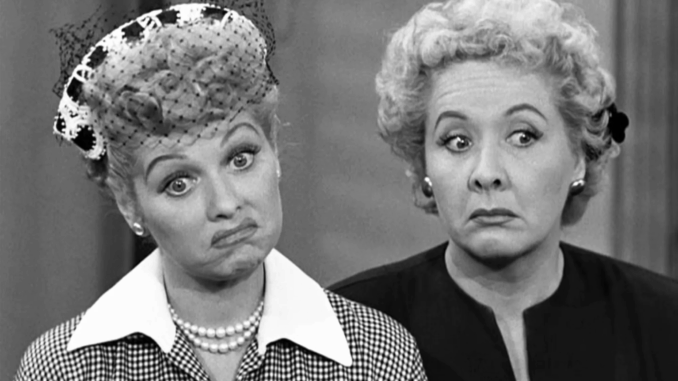
When it was announced that Nicole Kidman would be portraying legendary comedian Lucille Ball in Aaron Sorkin’s biopic, Being the Ricardos, the news was met with a mix of excitement and skepticism. Ball is a comedic icon whose genius is so distinct and beloved that many wondered if any actor could truly capture her essence. Kidman, a dramatic actress known for her serious roles, seemed a curious choice. However, Kidman’s meticulous and dedicated approach to the role proved the doubters wrong, earning her a Golden Globe and an Oscar nomination. Her preparation was a masterclass in method acting, and it all hinged on one iconic scene from I Love Lucy that she used as a daily warmup: the Vitameatavegamin commercial.
This single scene, a brilliant display of physical comedy and perfect timing, became the key to unlocking the character. For Kidman, it wasn’t about a fleeting imitation but about internalizing Ball’s comedic instincts and understanding the mechanics of what made her so brilliant. By practicing this iconic scene, Kidman was able to find a direct link to the heart of Lucille Ball’s comedic genius, proving that her commitment to the craft was far deeper than just getting the look right.
The Iconic ‘Vitameatavegamin’ Scene
To understand the significance of Kidman’s warmup, one must first appreciate the original Vitameatavegamin scene from I Love Lucy‘s Season 5 episode, “Lucy Does a Commercial.” In it, Lucy Ricardo, the ever-aspiring actress, lands a job as the spokesperson for a health tonic called Vitameatavegamin. The problem? The tonic has an incredibly high alcohol content.
What follows is a brilliant and hilarious descent into physical comedy. As Lucy is forced to take more and more spoonfuls of the foul-tasting tonic, her initial peppy demeanor gives way to a drunken stupor. Her speech becomes slurred, her movements become clumsy, and her facial expressions, from a forced smile to a glazed-over stare, are a masterclass in comedic performance. The scene is a perfect example of Lucille Ball’s unique blend of timing, slapstick, and physical expressiveness. She could convey a character’s entire emotional state with a single facial tic or an exaggerated motion. It is, without a doubt, one of the most famous and beloved moments in television history.
Kidman’s Daily Ritual: Finding the Funny
For Nicole Kidman, preparing for the role of Lucille Ball was not about mimicking the funny but about understanding the why behind it. Her process, as she and director Aaron Sorkin have revealed, was incredibly detailed. Every day before filming, Kidman would run through the entire Vitameatavegamin scene. She would not only practice the lines but also the physicality of it, from Lucy’s initial perky posture to her final, drunken slump on the table.
This wasn’t just a rehearsal; it was a ritual. By starting each day in the physical and comedic rhythm of Lucille Ball, Kidman was able to get into the right mindset for the more dramatic scenes of the film. Being the Ricardos focuses less on the on-screen antics of Lucy Ricardo and more on the complex, behind-the-scenes life of Lucille Ball, the savvy businesswoman, and the often-anxious performer. Using the Vitameatavegamin scene as a warmup was Kidman’s way of reminding herself of the comedic genius that lay just beneath the surface of the dramatic turmoil. It was her way of connecting with the person who could deliver a flawless comedic performance even while her life was in chaos.
Beyond the Scene: Kidman’s Full Transformation
The Vitameatavegamin warmup was just one part of Kidman’s full-scale immersion into the character. Her transformation went far beyond the physical comedy. She worked tirelessly with a dialect coach to perfect Ball’s distinct voice, spending countless hours listening to interviews and recordings. She also studied Ball’s off-screen persona, which was far more serious and calculated than her on-screen character.
The film required Kidman to portray two different versions of the same person: the larger-than-life comedic presence of Lucy Ricardo and the sharp, vulnerable, and often-tense Lucille Ball. This duality was the true challenge of the role. Kidman’s ability to seamlessly transition between the two, from the exaggerated comedy of the set to the quiet moments of despair in her dressing room, was a testament to her dedication. The Vitameatavegamin warmup helped her tap into the physical humor, but her deeper research and dramatic instincts allowed her to capture the complexities of the woman behind the comedy.
The Result: Critical Acclaim and a New Appreciation
Nicole Kidman’s meticulous preparation paid off in a big way. Despite the initial skepticism from the public, her performance was lauded by critics and a true favorite during awards season. She won the Golden Globe Award for Best Actress in a Motion Picture – Drama and received a nomination for the Academy Award for Best Actress. The consensus was that she didn’t try to do a direct impersonation of Ball, but rather, a masterful portrayal of the person behind the persona.
Sorkin’s film was not a recreation of I Love Lucy, but a powerful look at the human being who created it. Kidman’s performance was praised for its emotional depth and its ability to show the brilliance of a woman who had to fight for her creative vision every step of the way. The Vitameatavegamin scene, which she famously practiced every day, was not just a tribute to an iconic moment in television history but a key that unlocked a deeper, more nuanced understanding of a comedy legend. It was a reminder that behind every great performance is a lot of hard work, and in Kidman’s case, a very funny warmup.
